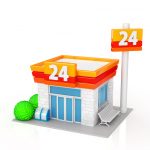The blinding pace at which online landscape is evolving is impacting each and every aspect of businesses. With the emergence of innovative technologies and data analytics, the ecommerce industry is obtaining a solid ground to deliver better consumer experiences.
Ecommerce business owners today have a great opportunity to leverage these modern technological trends and boost their businesses.
If you’re an ecommerce brand, using some strategies will help you gain new consumers and entice old consumers to keep coming back to your online store.
The successful ecommerce strategies are developed primarily depending on how customers shop, what they purchase, and how they respond to certain trends and technologies employed by businesses.
Global retail ecommerce sales are expected to reach 4.88 trillion US dollars by 2021, according to a report by Statista.
Now is the right time to step up your game if you want to stand out among your competitors.
The following strategies and tips will help you learn how to bring more traffic to your website, build trust and relationships with customers, and get those lost sales back.

The Sales Cycle
Every business is different and unique. Knowing how consumers move through the sales process can help to create the best ecommerce strategies possible.
If you want to advertise on the best E-commerce platform out there, you first need to understand how long it takes for a customer to complete the sales cycle.
Does your customer convert in a year, a month, a week? Defining your sales cycle requires some research and testing. Once you have this down, you’ll be able to move on to our next strategies.
Interactive Product Visualization
Unlike physical shopping, online shopping is intangible and requires a lot of guesswork on the customer’s part. So, product visualization is a crucial ecommerce strategy to showcase your products to the customers.
Your customers will be able to study every detail of a product. This will allow them to make an informed decision with no regret, helping you avoid negative reviews and complaints.
For instance, the recent addition of zoom function on many ecommerce sites has been a significant help for consumers and businesses alike. It allows users to zoom in on specific details and get a better visual of the product without actually touching it.
Besides a zoom feature, you could add more product demo videos to show your products in action. A video will display all the aspects of an item’s potential. Customers want to know how the product works and also ensure it looks the way they expect.
Advance Product Filtering
As we’re steadily moving toward the future, we seem to be getting busier. The world’s at a stage now where leisure happens to be a luxury. Customers want to save as much time as they can and shop up front.
The advanced filter technology will allow your consumers to find what they’re looking for quickly. It can be very useful if you’re selling a variety of the same types of products with lots of different options.
Product filters are a must-have strategy in 2019 for your online storefront. Unfortunately, 42% of big ecommerce sites don’t have category-specific filtering types for a lot of their product verticals.
If you’re a clothing store, advance product filters can help customers spot a specific size, color, style, and material. There are many ways to use filters in your online shop like theme-based, best-selling, price, user ratings, etc.
Consider putting as many specific product attributes as you can as a category filter. It’s a nifty way to remind users that these attributes are important to their selection process.
PPC Advertising
The Amazon PPC Management is an innovative way to help your ecommerce store get off the ground and running. No matter what size or type of business you run, by generating new traffic to your site without paying for ineffective ads you’ll realize how much potential you have for growth.
The PPC strategy is dynamic, adaptable, and focused on attracting the type of visitors who are most likely to be converted into actual buyers. It can help you maximize your business’s return on investment, create high-quality data, and produce instant results.
If you haven’t already started running your ad campaign, now would be a good time to put those pieces of knowledge into practice.
Chatbots
Chatbots are becoming an essential weapon for ecommerce brands when it comes to improving customer experience.
Chatbots can be used to instantly communicate with your customers and resolve whatever issues they have on multiple platforms like Facebook or your online shop.
A chatbot is a computer program that stimulates conversations with human users to give them various services. Some chatbots can be so advanced that it’s hard to distinguish them from texting with an actual person.
An estimated 1.92 billion users are expected to buy something online in 2019. A live chatbot can offer customers a highly personalized experience on your online store.
It can guide them down the sales funnel effectively by influencing their buying decisions. You can include the entire range of product and process knowledge for your consumers who have questions on the way to the checkout page.
Chatbots can also be programmed to fetch data from email campaigns, offer discounts codes, upsell and cross-sell products, and so on.
But the best thing about live chatbots is that they can help you track your inventory. So, you’ll know if you’re running out of certain items in your online store. Once the product is back in stock, a live chatbot will make sure your customers know about it.
More Delivery Options
As a significant aspect of ecommerce business, delivery has to be fast and timely if you want to keep up with today’s competitive market. Shipping is, in fact, one of the main differentiators among many online competitors.
Dropshipping is great for selling products online as it reduces the necessity of having a large inventory and helps you sell a wider range of products that you could just start a business on your own.
However, you’ll have some added competition from other sellers. So, paying attention to how you differentiate yourself is mandatory.
When you work with a good vendor, you’re able to deliver quality service quickly and easily to your customers with an inventory of products you can sell with confidence.
Mobile App
How many times have you been surfing the web on your phone and then had to switch to a PC to order a product you found on a website?
Building your own ecommerce app for mobile devices has several benefits. Apps load more quickly than websites so users can shop more efficiently. When you have an app, customers are just one tap away from viewing your product.
A mobile app also allows you to send push notifications to notify customers when you’re having a sale or when their favorite product is back in stock.
72.9% of ecommerce will take place on mobile devices by 2021. So, if your online business is already established and you’re looking for a way to continue to develop your brand, consider building a mobile app. It’s a great way to boost sales and drive growth. By the year 2024, majority of eCommerce sales are made through mobile phones and will increase 79 percent by the year 2024 according to CellPhoneDeal mobile ecommerce statistics.
Wrapping Up
The ecommerce landscape is evolving, meaning the industry will get bigger and better in the future and technological trends will make it more seamless.
As a growing ecommerce business owner, you must keep a track on these trends and find ways to utilize the ones that best suit your needs.
The above ecommerce strategies will provide a better value to your clients and make your business more successful this year and beyond.











